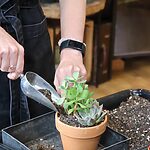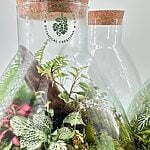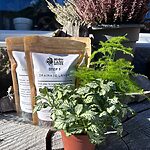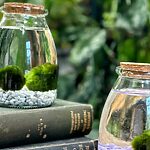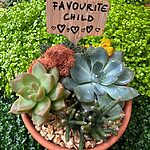Table of Content
- About
- Light
- Humidity
- Water
- Soil
- Pest & Diseases
- Feed
- Pruning & Propagating
- Repotting
- Troubleshooting & Tips
- Toxicity
- Species
- Tradescantia Nanouk
- Tradescantia Zebrina
About
Tradescantia is an incredibly pretty genus of plants. Coming in a choice of either climbing or trailing their bright foliage is captivating. The long-reaching stems create delicate, thin blade-like leaves that dazzle in an array of sizes that seem to shine with a spectrum of purples, pinks and greens.
These interesting plants hold about 85 different species of herbaceous wildflowers that belong to the family Commelinacea, which are native to the Americas. Stretching far and wide across the contents from southern Canada and Northern America all the way down to Argentina. They commonly grow on various parts of these regions and can be found forming clumps in open fields and woodland where they reach sizes of up to 60cm long. They have gone on to be naturalized in many more regions of the world after being introduced as an ornamental plant in the 17th century and they can now be found growing wild in Australia, Asia, Africa and Europe.
Tradcanthia has proven itself to be a robust houseplant that is definitely beginner friendly and has been a popular choice for both hanging and trailing plants. Also known as Spiderwort, Wandering ‘Dude/Sailor’ (you may have seen it with other names but they were controversial) or Inch plant, their unique presentation and easy care regime have ensured their popularity. Often coming in an array of sizes from little 3cm pots to large hanging baskets, Tradiscanthia is virtually carefree and super easy to propagate from.
Light
Tradescantia almost always has bright variegation and to be able to maintain this foliage they will need to be exposed to bright indirect sunlight for as much of the day as possible. This will help them to keep their variegation looking at its best and stop it from becoming dull and faded.
Their leaves are delicate and thin and won’t enjoy being exposed to direct sunlight. This will quickly cause them to scorch which will leave burn marks on the foliage.
In conditions where the light is too low, Tradescantia will quickly become leggy as it reaches towards the nearest light source. This will also cause the colour of the leaves to quickly fade.
Humidity
While Tradescantia will prefer slightly higher levels of humidity around 60%, making them perfect to be placed in the kitchen or bathroom, they will happily tolerate regular household humidity of 40%.
If the environment isn’t overly humid you will need to keep an eye out for browning leaf tips. This will be the first sign that the plant needs more moisture in the air. This problem can easily be solved with regular misting or following the tips below to improve humidity.
Pro Tip
The best way to maintain high humidity is to use a humidifier placed about a meter away from your plant to provide high ambient humidity. Alternatively, you could place your plant on an undertray filled with coya pebbles or small stones that are sitting in a shallow layer of water. Make sure the plant is not submerged in any water as this can lead to root rot. As the water from the undertray evaporates from the surface of the pebbles or stones it will keep humidity levels high exactly where you need it most.
Water
Tradescantia sits comfortably in the middle of the watering spectrum. They like to have their soil kept relatively moist but not wet or soggy as this can lead to root rot and fungal infection. The plant shouldn’t be allowed to dry out completely as this will result in leaf drop. A continuous moist soil will be the ideal sweet spot. When in doubt, it’s always better to underwater your plant than to water it too much. Slight underwatering is a much easier problem to solve!
Top Tip
Always water from the base of the plant. Sitting your plant in an under tray and allowing it to absorb water from the base will reduce the risk of overwatering and is a good preventative measure for fungus gnats. Remember to always set a timer from the minute the plant goes in the water, we don’t want any forgotten casualties on our hands.
Pro Tip
Before you water your plant, take note of the weight of the pot. Once you’ve watered the plant, try to notice the difference in weight from before. Now you can quickly tell if your plant needs water by just lifting it up.
Soil
Tradescantia prefers well-drained soil that can retain moisture between watering. The ideal soil mix will be nutrient-rich, allow for good aeration, be slightly acidic, and free-draining with a smidge of water retention.
Most houseplant potting mixes will be sufficient, but you can always add perlite for some additional drainage, and vermiculite for added water retention. With a combination of these, you can provide the best environment for your plant to thrive.
Pest & Dieases
It is good practice to regularly check your plants for any signs of aphids, red spider mites, mealy bugs, and thrips. You may notice some signs of distress and allow yourself time to prevent a full-blown attack.
The most common pests that are attracted to Tradescantia are aphids and spider mites.
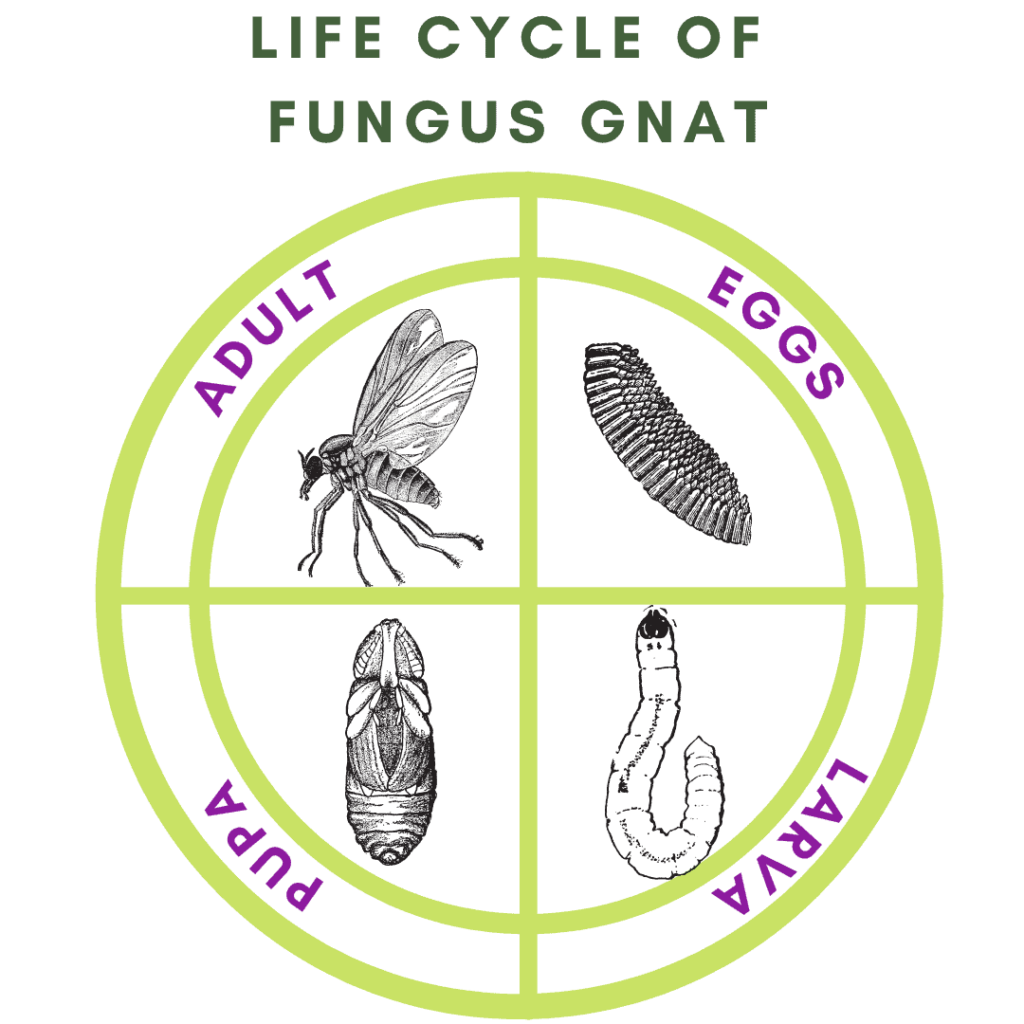
Check our video on homemade pest remedies or head over and read are Fungus Gnat Fact Check
Feed
These don’t need too much feeding as this can lead to loss of variegation. But like most houseplants, to promote healthy roots, stems, and leaves they will need a steady supply of nitrogen, phosphorus, and potassium. The most important is nitrogen to keep their leaves looking their best.
A good liquid houseplant feed can be applied at half strength every 8 weeks during the growing season. There’s no need to feed during the winter, light levels are much lower and the plant won’t use as much energy to grow.
Top Tip
A drop of houseplant feed in a mister bottle is a great way to feed via its foliage. This will help to promote those glossy green leaves!
Pruning & Propagating
Being a trailing plant pruning can be helpful to keep the plant looking tidy. Regular trimming will also help to encourage new growth which will help the plant to look full and abundant and give it a fuller appearance.
REMEMBER – Always use clean and sharp pruning scissors!
Cuttings -You can gather good propagating material when pruning back your plant. If you prune your Tradescantia, take a cutting of around 3 to 5 inches. Trim off some of the leaves at the base of the stem and simply place your cuttings in a glass of rainwater and wait for up to 2 – 4 weeks to start seeing signs of new roots. You will need to regularly change the water to avoid algae. Once you have substantial root growth you can place the cutting into a small pot of Houseplant mix
You can also put your cutting straight into a jar with fresh sphagnum moss. This is probably the easiest way to propagate as it has the least steps involved. Simply take your cutting, find a jar or pot preferably with no drainage holes, fill it up with fresh moss and nestle your cutting in the centre. Fill up the jar with water so the moss has been evenly watered and then drain out all excess water making sure not to leave any at the bottom of the jar. Now just keep an eye on your new cutting checking the moss every couple of days to ensure it hasn’t dried out.
Repotting
It’s best to repot your Tradescantia once the plant has become root bound. Depending on the size of the plant, you may find yourself repotting every two to three years. Being rootbound will reduce the risk of being overwatered.
The pot size can increase by one step up as long as you have the space to house the new influx of growth. If you have reached your maximum pot size you will need to top-dress the plant once a year with a fresh layer of soil to replenish the nutrients.
The best time to repot your Tradescantia is when spring arrives. Outside temperatures will rise and the daylight hours will increase. When this happens your plant will react quickly to the environmental change and start producing lots of new roots and foliage growth.
You will need to pick a pot with good drainage, we don’t want water hanging around the roots. Next, fill a third of the way up with a Houseplant Potting mix. Place the root ball of the plant in the centre of the pot.
Next, fill the pot with the rest of your potting mix and firm down the soil.
When you’ve finished and got your plant back in the perfect spot you can give it a thorough watering to settle the plant into its new pot. Keep a close eye on it for the first few weeks and then relax back into your normal watering and feeding schedule.
Troubleshooting & Tips
- Underwatering this plant will result in stunted growth, yellow leaves and a lacklustre appearance. But this is a much easier problem to solve than overwatering.
- The more light the plant is exposed to the quicker it will dry out and the more frequently it will need to be watered.
- Loss of variegation will mostly be down to lack of light but can also be caused by overfeeding.
- Be careful not to over mist the plant as excess water sitting on the top of the leaves can cause yellowing spots.
Toxicity
Tradescantia is non-toxic and doesn’t pose a poisonous threat to humans or animals. However, if ingested in large quantities it will likely cause nausea and vomiting.
Species
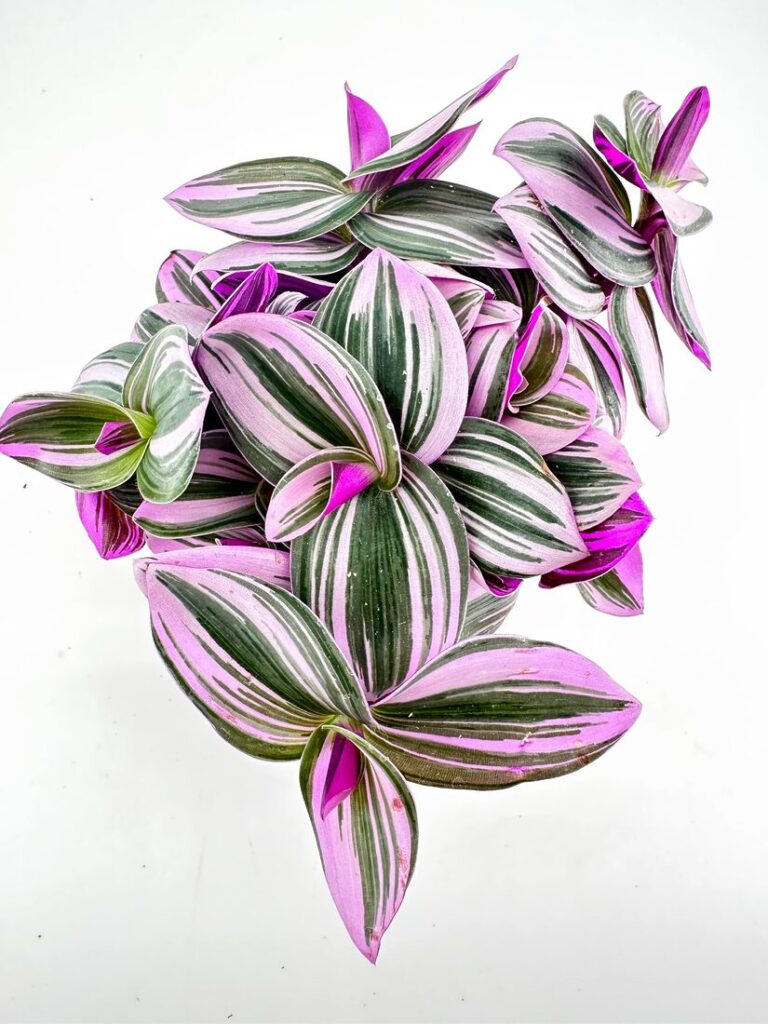
Tradescantia Nanouk
Tradescantia Nanouk, also known as Fantasy Venice or Tradescantia albiflora ‘Nanouk’, is a stunningly beautiful and colourful plant that is sure to catch the eye of any plant lover. The plant features elongated leaves that are soft and fleshy, with a vivid shade of pink on the top and light green on the bottom.
Tradescantia Zebrina
The leaves of Tradescantia Zebrina grow in a trailing manner, creating a cascading effect that is both charming and captivating. Its bright leaves in shades of green and purple form an eye-catching zebra-like pattern. The plant produces small, delicate flowers that bloom in shades of pink and white, adding a delicate touch of beauty to the overall display.
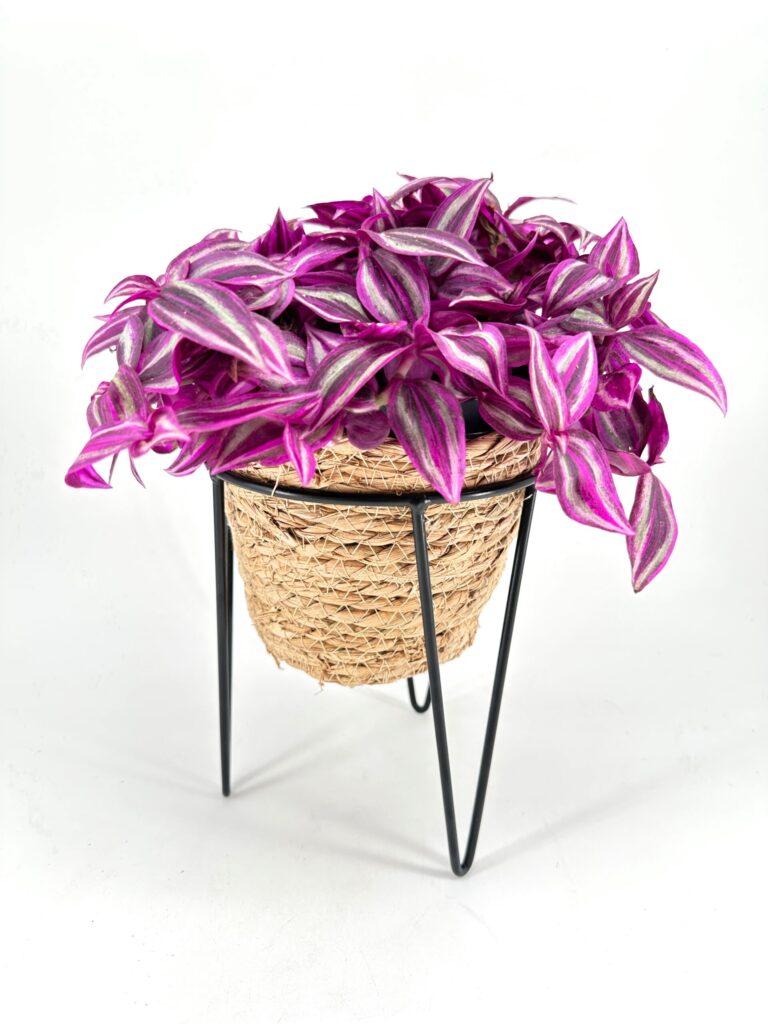
If you enjoyed this guide head over to Articles & Blogs to learn more or check out our YouTube for even more useful information!



